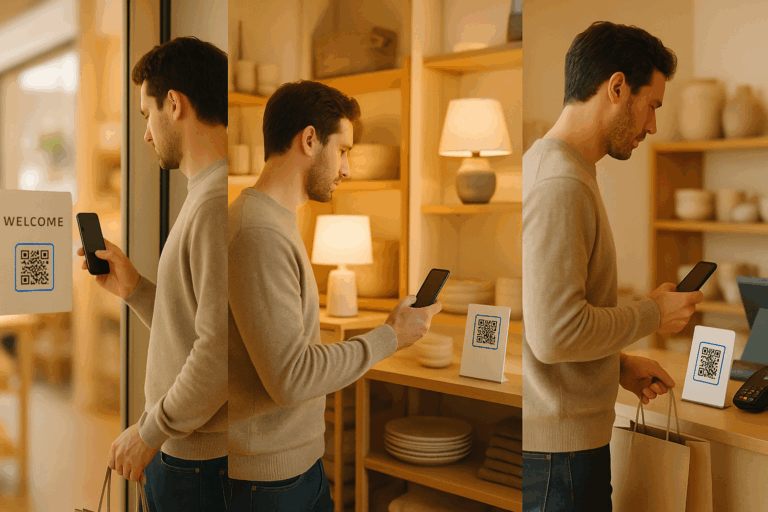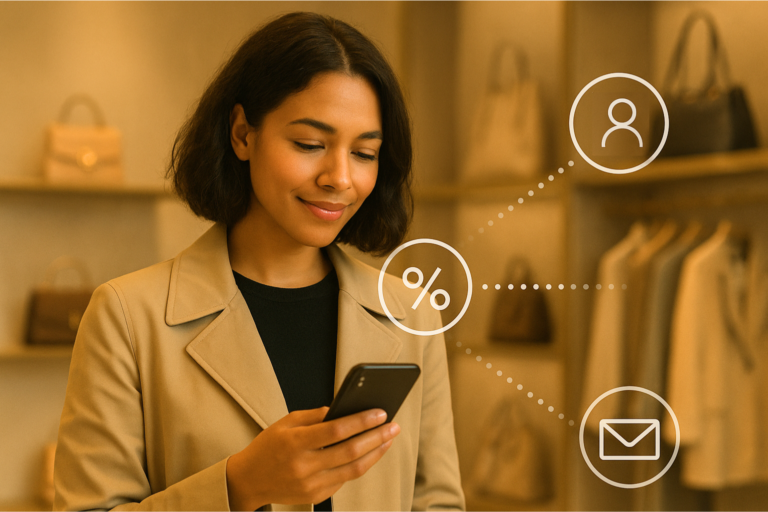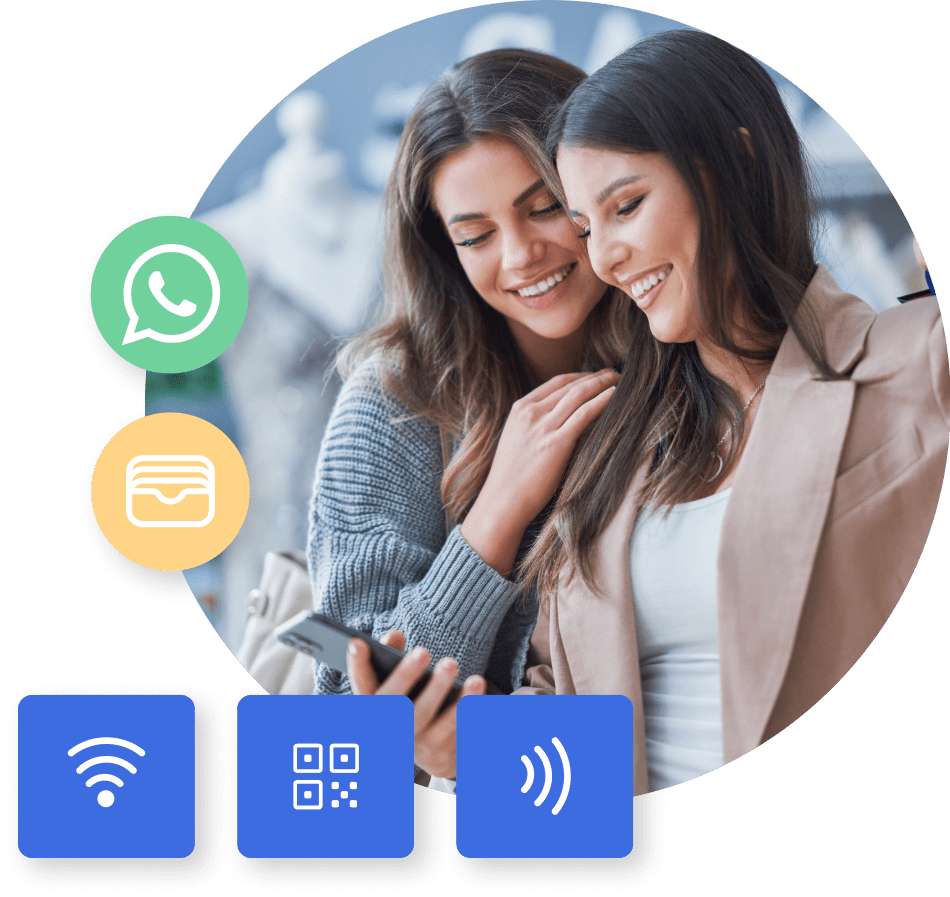For many mid-sized retailers across Europe, developing a branded mobile app has become a strategic priority. These apps aim to strengthen customer relationships, gather valuable data, and create new engagement opportunities. Digital receipts often feature prominently in these applications, offering convenience while generating purchase data.
Yet despite significant investment in app development, retailers face a persistent challenge: even successful retail apps typically reach only 20-30% of a store’s customer base, according to the European Retail Consortium’s 2023 Technology Report. This creates a substantial gap in customer understanding and missed engagement opportunities.
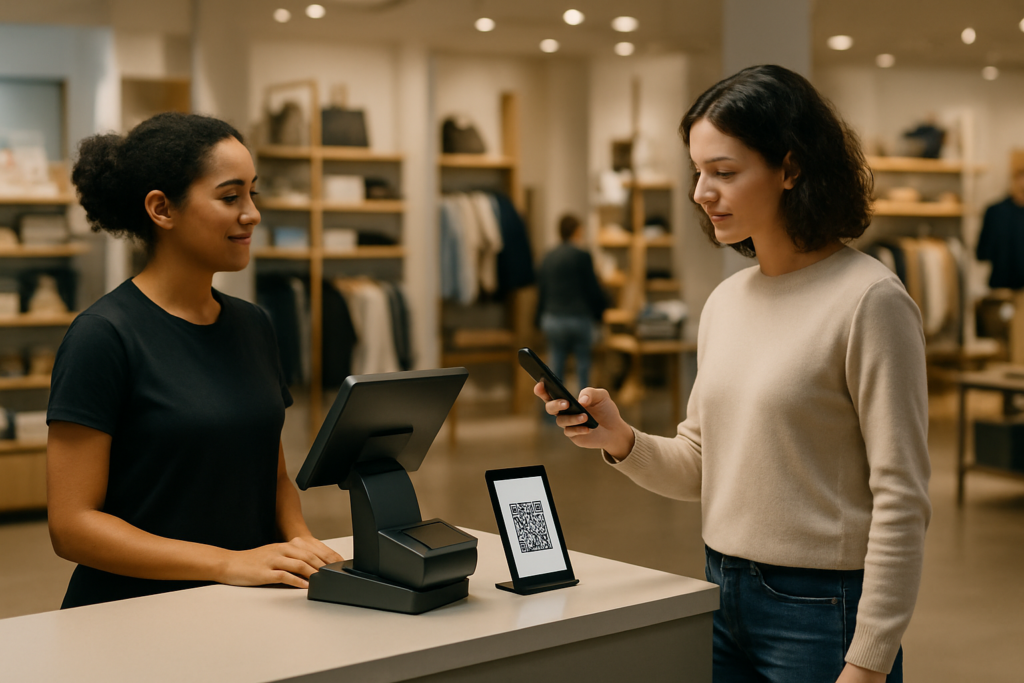
The Hidden Majority
While retail apps serve your most engaged customers wonderfully, what about everyone else? The statistics paint a clear picture: the majority of your customers won’t download or regularly use your app. A 2023 study by AppDynamics found that only 32% of consumers download retailer-specific apps, and of those who download, just 61% remain active users after 30 days.
This reality creates a significant data gap. Your most loyal app-using customers become increasingly well-understood, while the majority remain anonymous – their preferences, behaviors, and value hidden from view.
A Complementary Approach
Forward-thinking retailers are discovering that specialized digital receipt solutions can complement their app strategies rather than compete with them. This dual approach offers significant advantages for businesses looking to connect with their entire customer base.
Reaching the Other 70%
While your app serves your most loyal customers, a complementary digital receipt solution can engage the remaining majority. These systems capture email and mobile contacts from non-app customers and generate transaction data from previously anonymous shoppers. They create lightweight engagement opportunities with occasional visitors and help build a comprehensive view of your entire customer base.
One European home goods retailer implemented this complementary approach and saw their identified customer rate increase from 31% to 78% within four months. This dramatic improvement allowed them to understand purchasing patterns across their entire customer base, not just their most loyal app users.
Creating an App Adoption Pathway
Rather than competing with your app, a well-designed digital receipt solution can actually drive app adoption. These systems introduce customers to digital benefits through frictionless experiences. They help identify high-engagement non-app users who are prime candidates for app downloads and enable targeted messaging to encourage app adoption from receptive customers.
A UK home goods chain found that customers who first engaged with digital receipts were three times more likely to download their app when prompted compared to those approached directly. This created a natural progression from casual shopper to engaged app user, strengthening their overall digital strategy.
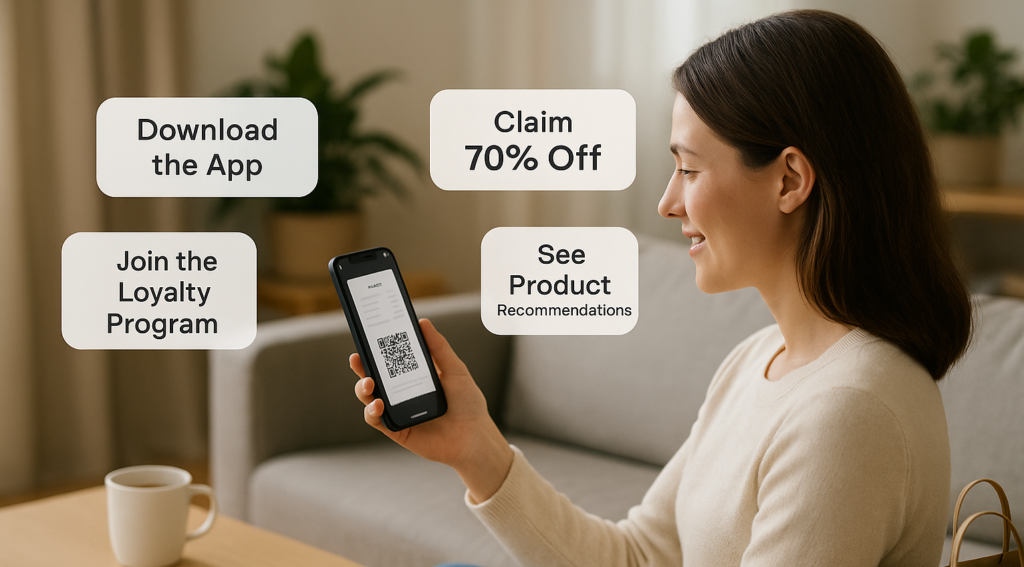
Technical Integration That Makes Sense
Modern digital receipt platforms are designed to work alongside your app, not against it. They can detect when customers have your app installed and deep-link them directly, ensuring a seamless experience. These systems can push receipt data to your app via API when preferred and provide a consistent brand experience across both channels.
This integration capability ensures a cohesive customer experience while maximizing data collection across all customer segments. Customers receive the appropriate digital experience based on their preferences, while retailers benefit from comprehensive data regardless of which channel the customer chooses.
Maximizing Your Data Collection
The true power of this complementary approach lies in the enhanced data quality it provides. By combining app data with broader customer insights, retailers can create more accurate customer segments based on comprehensive data. This allows for more effective personalization strategies and helps identify previously hidden high-value customer groups.
Understanding cross-channel shopping behaviors becomes possible when you have visibility into your entire customer base. With more complete customer data, retailers can develop distinct communication strategies for different customer segments and create targeted app download campaigns for their most valuable non-app users.
Marketing spend can be optimized based on complete customer understanding, rather than the limited view provided by app-only data. Personalized promotions based on actual purchase behavior become possible for all customers, not just app users.
Measuring Success
A 2024 survey by Yocuda found that 72% of UK consumers opt for digital receipts when given the choice at checkout . This preference is even more pronounced among younger demographics, with 80% of shoppers aged 26 – 35 expressing a desire for digital receipts. The primary motivations cited include ease of storage, reduced likelihood of losing receipts, and environmental considerations.
Retailers who integrate digital receipts alongside their existing app strategies often see noticeable improvements in customer engagement and business performance. How?
Digital receipts deliver personalized product recommendations, new promotions, or links to loyalty programs, fostering deeper customer connections and boosting satisfaction. Switching to digital receipts helps retailers cut costs associated with paper, ink, and printer maintenance.
In fact, according to recent stats, businesses can save up to 60% of their receipt-related expenses by going digital. This not only saves money but also streamlines operations, making the process more sustainable and efficient.
Implementation Without Disruption
For retailers who have already invested in app development, implementation can be straightforward and minimally disruptive. The process typically begins by deploying the digital receipt solution in parallel with the existing app, ensuring consistent branding and user experience.
Next, retailers can analyze customer segments across both platforms and optimize communication strategies based on comprehensive data. As the system matures, advanced capabilities like personalized product recommendations and unified customer journey mapping become possible.
Throughout this process, the existing app continues to serve its purpose for engaged customers, while the digital receipt solution extends the retailer’s reach to previously invisible customers.
Bridging the Gap
Your retail app serves a vital purpose for your most engaged customers. But what about everyone else? A complementary digital receipt solution bridges the gap, helping you build relationships with all your customers – not just the app users.
By implementing this dual approach, you can maximize your existing app investment while addressing the critical blind spot of non-app customers. The result is better data, more effective marketing, and ultimately stronger customer relationships across all segments of your customer base.
Would you like to learn more about how digital receipts can help you reach the 70% of customers your app might be missing? Schedule a demonstration of how this technology can complement your existing strategy.




